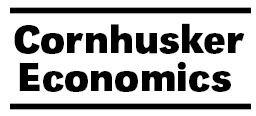Agricultural Economics, Department of

Cornhusker Economics
Date of this Version
4-22-2020
Document Type
Newsletter Issue
Abstract
It is now clear that the spread, mortality and morbidity impacts of the coronavirus pandemic are sizeable but extremely heterogeneous across multiple dimensions. Geography shows that places with lower human con-centrations (urban/rural divide) and away from main travel axes, such as major interstate highways and in-ternational airports, have a lower incidence of cases. Large urban centers with high human concentrations have been much disproportionally affected and with much higher mortality rates. Age and health status are equally important. Mortality increases dramatically for people 60 years old and older. People with comorbidi-ties (cardiovascular, obesity, diabetes, and others) are much more likely to be hospitalized and die of COVID -19 than are healthy people. Family and household composition is also important. Multigenerational households are much more common in say Italy than in Sweden. Swedish households tend to live more inde-pendently often in one-person households, which pro-vides some “cultural” self-isolation, which is helpful in case of a pandemic. In addition, medical infrastructure and preparedness vary greatly across states with devas-tating consequences like in New York City, partly be-cause the pandemic hit early, and partly because of the lack of intensive care unit (ICU) infrastructure (COVID-19 Project). States in the Midwest had more time to prepare and learn to ramp up testing etc.


Comments
Copyright 2020 University of Nebraska.